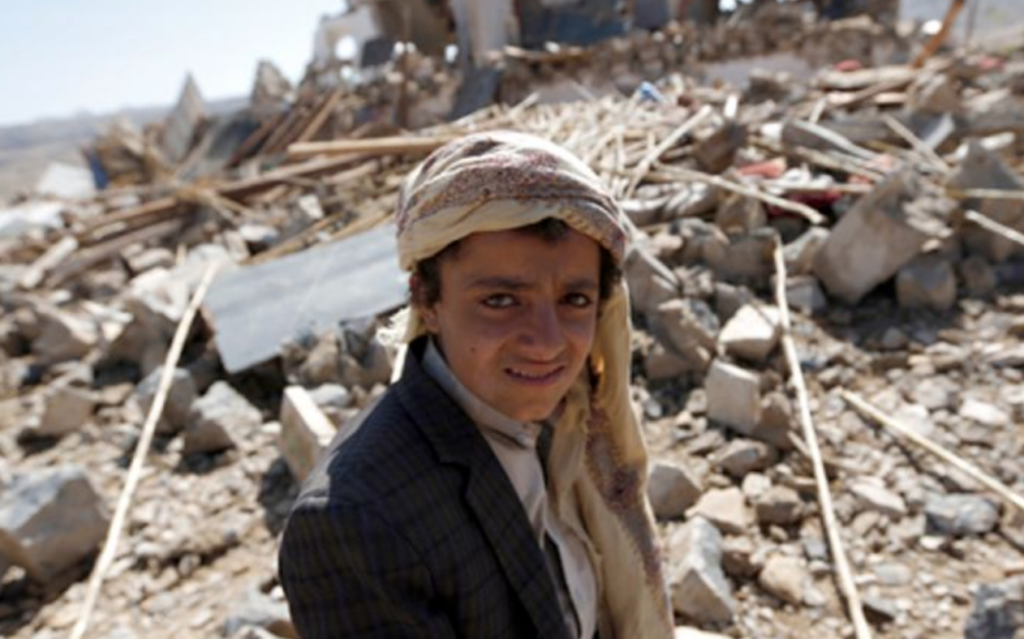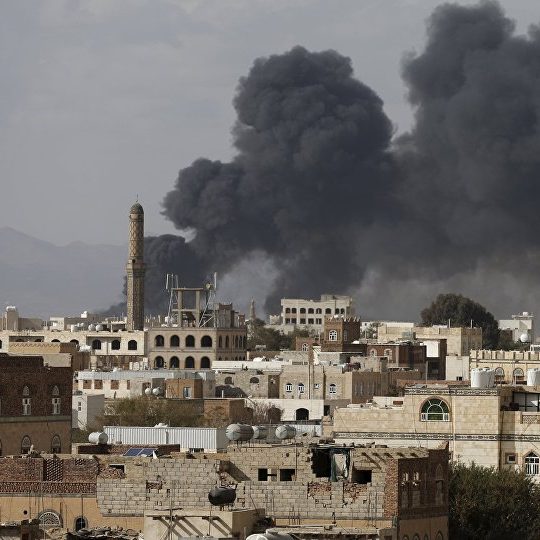
The details of war profiteering come from Alex Kane at In These Times.
Back in 2018, I reported in Salon about how Raytheon’s stock skyrocketed along with deadly attacks on Yemeni civilians.
Kane updates and expand the story of the money to be made from killing men, women, and children.
Under President Barack Obama’s administration and, now, President Donald Trump’s, the United States has put its military might behind the Saudi-led coalition, waging a war without congressional authorization. That war has devastated Yemen’s infrastructure, destroyed or damaged more than half of Yemen’s health facilities, killed more than 8,350 civilians, injured another 9,500 civilians, displaced 3.3 million people, and created a humanitarian disaster that threatens the lives of millions as cholera and famine spread through the country.
U.S. arms merchants, however, have grown rich. Fragments of the bombs were documented by journalists and HRW with help from Mastaba villagers. An HRW munitions expert determined the bombs were 2,000-pound MK-84s, manufactured by General Dynamics. Based in Falls Church, Va., General Dynamics is the world’s sixth most profitable arms manufacturer. One of the bombs used a satellite guidance kit from Chicago-based Boeing, the world’s second-most profitable weapons company. The other bomb had a Paveway guidance system, made by either Raytheon of Waltham, Mass., the third-largest arms company in the world, or Lockheed Martin of Bethesda, Md., the world’s top weapons contractor.
“If a country, like Saudi Arabia or the UAE, has no commitment to human rights—whether stated or in practice—it’s no wonder that those countries would eventually misuse U.S.-sold weapons by committing war crimes,” says Kate Kizer, the policy director of Win Without War. “The U.S. government should be assuming these weapons of warfare will eventually be used in a conflict, even if one isn’t going on at the moment.”
With the Saudi invasion of Yemen in 2015, the U.S.-Saudi arms pipeline became deadly. Despite reports that U.S. bombs were killing civilians, the Obama administration’s support for the Saudi war drew only muted criticism in Washington.
“It was Obama’s war, and there was a lot of reluctance in Congress to take this on, particularly among Democrats,” says Shireen Al-Adeimi, a Yemeni American activist and professor at Michigan State University. Still, advocates with groups like Win Without War, Just Foreign Policy and the Yemen Peace Project worked to raise public awareness of the war’s horrors, lobbying Congress and the White House.
An In These Times analysis found that in the past decade, the State Department has approved at least $30.1 billion in Saudi military contracts for these four companies.
Source: Here’s Exactly Who’s Profiting from the War on Yemen



